10 Comics Characters Who Debuted Outside Comics
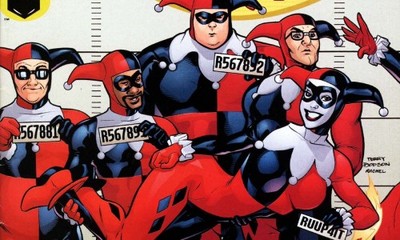 |
Superhero comics are a weird genre. They’re especially weird in that they go on indefinitely. Movie franchises end (except for James Bond, of course). TV shows get canceled. Radio shows… well, there aren’t many of those anymore.
Comics have a constant need to feed the monthly beast with new stories and characters, and on quite a few occasions, they’ve simply absorbed the original creations added to adaptations of superhero stories that have come and gone as the comics versions of the characters soldiered on. Some of these you’ll recognize as TV (and in a couple cases, radio) characters, some you won’t — but rest assured, wherever they first appeared, it wasn’t in the comics.
10) Chloe Sullivan
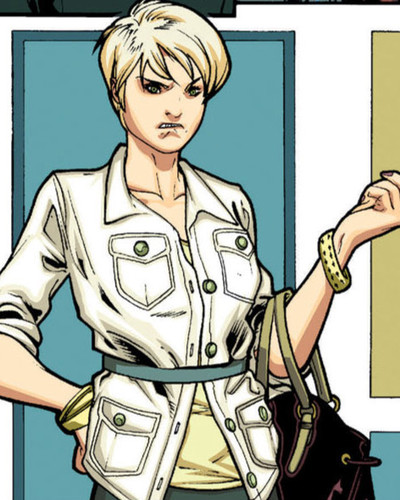 |
Chloe served as Smallville’s Lois Lane surrogate of sorts (at least until Lois showed up), a stalwart friend of Clark Kent’s whose journalistic curiosity got her into some scrapes, and who was clever enough to figure out that Clark was, well, if not Superman, at least a guy with weird powers. She was one of only a few original, recurring characters created for the show, and she’s the only non-Clark character who lasted all 10 seasons. In 2010, Chloe finally debuted in the DC Universe in the really great Jimmy Olsen backups in Action Comics, after years of plans to bring her into the DCU.
9) Morph
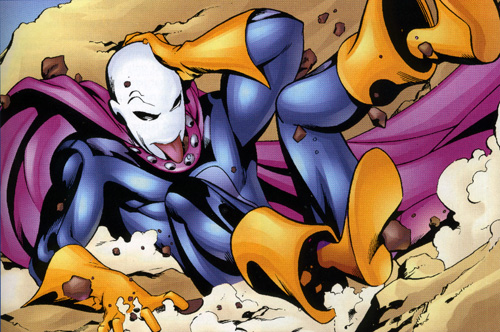 |
This one’s a tiny bit of a cheat. The X-Men animated series’ version of Morph shared the same powers as former villain and Professor X stand-in Changeling, but the wacky persona and his codename were more or less a creation of the cartoon. By the time the Changeling, a.k.a. Kevin Sydney, was introduced into Age of Apocalypse’s alternate universe, his personality and his name had changed to be more like the animated version. When the character became a regular in the series Exiles, he was the cartoon Morph through and through.
8) Livewire
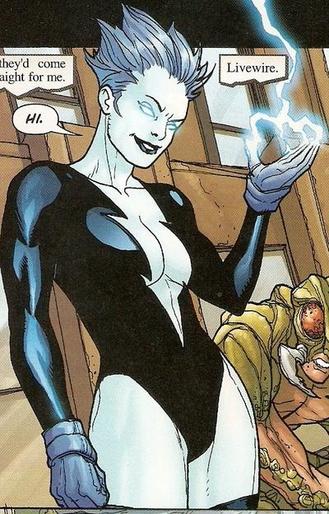 |
The 1990s Superman animated series mostly honored the character’s past, featuring classic characters like Dan Turpin and Mr. Mxyzptlk. But it did have a couple characters of its own, namely Lex Luthor’s bodyguard, Mercy (who made her way into comics herself) and the shock-jock super-villain Livewire, who took her sweet time entering the DCU, debuting in 2006. She’s made regular appearances in the Superman books since, most recently claiming Superman’s old electric-blue costume for her own and becoming his ally.
7) H.E.R.B.I.E.
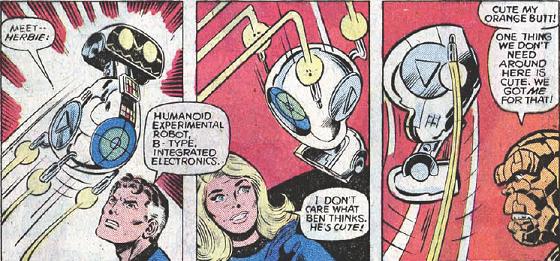 |
When the Fantastic Four came to TV in the late seventies, Marvel couldn’t use the Human Torch (contrary to popular belief, he wasn’t left out because he’d be a guy who’s on fire all the time in a program for children; instead, there was talk of the character starring in a movie) and replaced him with a huggable robot to fill out the team’s ranks. The show lasted all of one season, but H.E.R.B.I.E. lives on even now in Marvel’s all-ages Franklin Richards series of titles.
6) Chief O’Hara
_001-thumb-370x368.jpg) |
It isn’t crazy to think that the most prominent character to emerge from the 1966 Batman TV show would be Aunt Harriet, who’s so closely associated with Adam West and Burt Ward’s Batman and Robin. But Aunt Harriet was in Batman comics a full two years before that show premiered. Commissioner Gordon’s sidekick Chief Miles O’Hara, however, was developed for the show. The year Batman premiered, O’Hara became part of the Batman mythos as the retconned chief of police during Batman’s early years. He was famously killed off (with a different first name) in Jeph Loeb and Tim Sale’s Dark Victory miniseries.
5) X-23
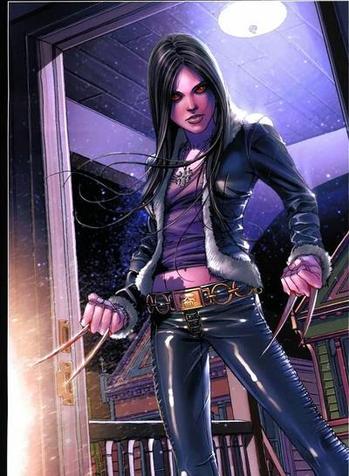 |
Before she first appeared in 2004 in the series NYX as a teenage prostitute (she eventually and thankfully ran away from that situation and starred in several X-titles and her own long-running series), X-23, a female clone of Wolverine with powers very similar to his, was on a couple episodes of X-Men Evolution. On the show, she confronts Wolverine hoping to get revenge on him, but runs away when he says he understands her. Later, she and Wolverine team up to take on Hydra.
4) Firestar
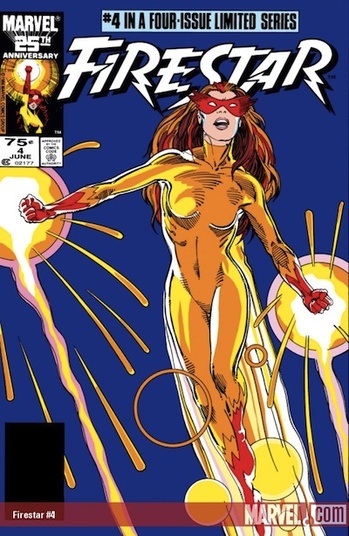 |
Prior to being a member of the New Warriors and the Avengers, Firestar was one of Spider-Man’s Amazing Friends in the eponymous ’70s cartoon. Though the other pal, Iceman, had been around since the first issue of X-Men, the show’s creators couldn’t manage to get the Human Torch into the show because of rights issues (that guy is just too tough to get into cartoon), and they created Angelica Jones to take his place. Firestar popped up in X-Men two years after the show went off the air.
3) Green Hornet
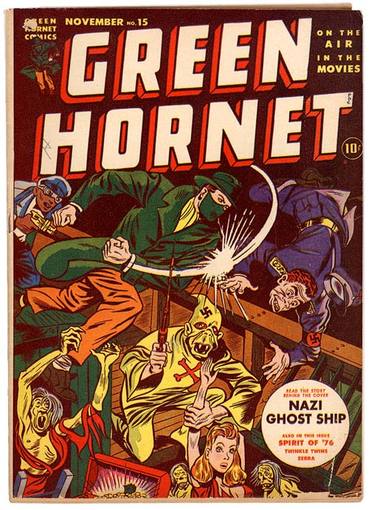 |
Because his 1960s TV show was paired with Batman’s, lots of people think the Green Hornet was originally a comics character, even a DC character. But the masked vigilante alter-ego of publisher Britt Reid made his debut in radio serials in 1936, a full three years before Batman popped up in Detective Comics. The Hornet didn’t show up in comics until 1940, under the Holyoke Publishing banner, later Harvey. Most recently, his Kevin Smith-penned adventures have been published by Dynamite.
2) Harley Quinn
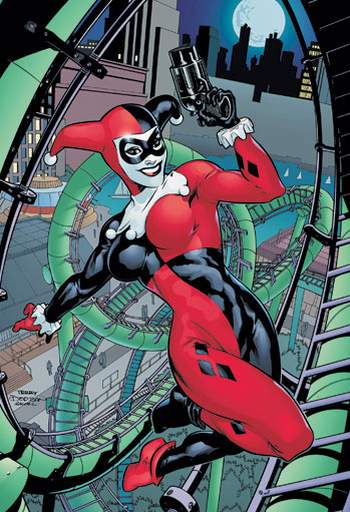 |
Batman: The Animated Series actually played a role in introducing two major characters to Gotham City, but one, Renee Montoya, actually slipped into comics before her TV debut. The other, Dr. Harleen Quinzel, the Joker’s one and only, showed up in some animated-style comics (notably the Mad Love OGN) and a couple Elseworlds stories before entering the DCU proper in 1999. Now, she’s a key member of the new Suicide Squad, and kind of a Juggalette. (Meanwhile Montoya, who may be dead, seems to have gotten the better end of the New 52 deal.)
1) Jimmy Olsen
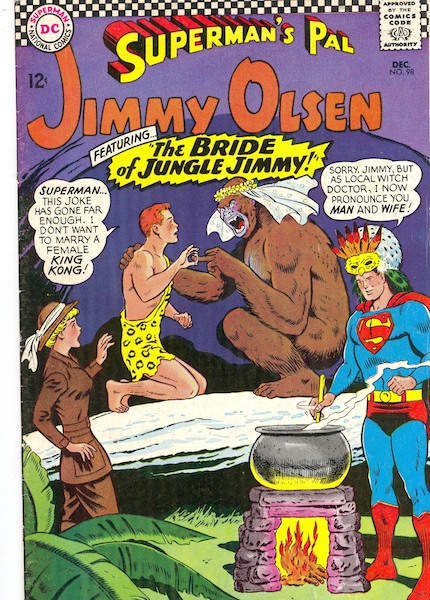 |
Believe it or not, Jimmy Olsen shares the distinction of non-comics-original character with his TV girlfriend, Chloe Sullivan. Of course, he was introduced nearly six decades earlier, in the Adventures of Superman radio show, which debuted in 1940. The show’s creators added Superman’s pal to the show so Supes would have someone to talk to, a pretty important aspect of radio. Olsen didn’t show up in Superman comics until the following year, though an unnamed copy boy often considered to be Olsen did make an appearance in a 1938 issue of Action Comics. Even so, he wasn’t Jimmy Olsen until he was on the radio.
